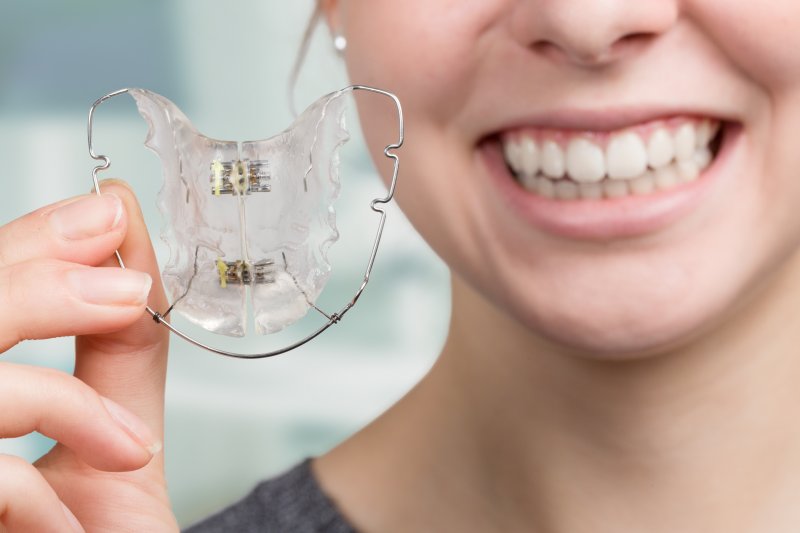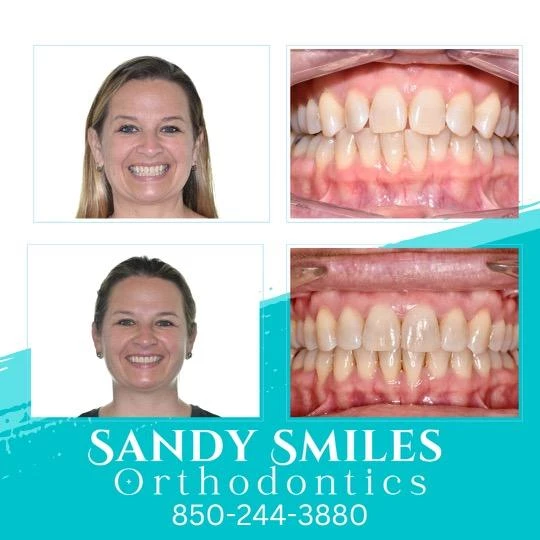Discover the Advantages of Invisalign for a Perfect Smile Improvement
Discover the Advantages of Invisalign for a Perfect Smile Improvement
Blog Article
Invisalign vs. Traditional Braces: Which Option Is Right for You?
When thinking about orthodontic treatment, the selection between Invisalign and conventional dental braces offers numerous vital factors that warrant mindful assessment. Invisalign uses a very discreet alternative with detachable aligners, while conventional dental braces provide a much more noticeable yet reliable service for severe imbalance.
Review of Therapy Choices

On the other hand, standard dental braces consist of steel brackets and cords that are bonded to the teeth. This method uses constant pressure in time to attain placement. While effective for complex orthodontic issues, traditional braces need routine sees for modifications and can present obstacles in preserving oral hygiene as a result of the problem of cleaning around brackets and cables.
Both alternatives have their benefits, and the option frequently depends upon details oral conditions, lifestyle preferences, and client compliance. Eventually, speaking with an orthodontic specialist is important for determining the most suitable treatment plan customized to specific needs. Comprehending the subtleties of each option can considerably affect the total success of orthodontic therapy.
Aesthetic Considerations
A substantial element affecting the choice between Invisalign and typical dental braces is the visual allure each treatment supplies. Invisalign aligners are crafted from clear plastic, making them basically unnoticeable when put on.
In contrast, standard dental braces include metal brackets and wires, which can be much more obvious. While advancements in orthodontic technology have caused the growth of smaller sized brackets and colored elastics, conventional dental braces still maintain an even more obvious profile. For some individuals, the exposure of braces may deter them from seeking essential treatment.
Ultimately, the selection between Invisalign and standard dental braces may rest on individual preferences regarding aesthetics. Individuals that prioritize discretion often favor Invisalign, while those that are less concerned concerning presence may choose for typical braces. Comprehending the visual implications of each choice is critical for making an informed decision that lines up with one's way of living and preferences.
Comfort and Convenience

In terms of convenience, Invisalign aligners are removable, making it possible for individuals to enjoy their favorite foods without constraint and preserve optimal dental health. Brushing and flossing are streamlined, as the aligners can be secured during these regimens, whereas standard braces call for cautious navigating around brackets and cords.
In contrast, typical braces demand regular modifications, making them much less convenient for those with active schedules. Generally, the comfort and comfort of Invisalign make it an enticing choice for lots of people seeking orthodontic treatment.
Therapy Period and Efficiency
While both Invisalign and typical braces work in dealing with dental misalignments, the duration of therapy can vary substantially in between both options. Typically, Invisalign treatment can take anywhere from 12 to 18 months, depending upon the intricacy of the case. The clear aligners work by gradually shifting teeth into their desired settings, and normal follow-ups with an orthodontist help guarantee development continues to be on course.
In comparison, traditional braces typically call for a longer dedication, generally varying from 18 months to 3 years. This results from their set nature and using braces and cords, which can be more effective for severe misalignments and complex cases explanation (Invisalign). The treatment performance of traditional dental braces is well-documented, as they permit for specific changes and greater control over tooth movement
Ultimately, the choice in between Invisalign and typical dental braces may rest on both the anticipated therapy period and the details oral concerns available. Consulting with an orthodontist is vital, as they can supply customized suggestions based on private needs, guaranteeing the chosen method straightens with preferred durations and end results.
Expense Comparison and Insurance Alternatives
Price plays a considerable role in the decision-making process for individuals considering orthodontic therapy, whether selecting Invisalign or conventional braces. Usually, the expense of Invisalign arrays from $3,000 to $8,000, while traditional dental braces usually cost in between $2,000 and $6,000. Elements affecting these expenses consist of the intricacy of the instance, the duration of therapy, and geographical location.
Insurance policy protection can significantly affect out-of-pocket expenses. Several oral insurance coverage plans supply partial coverage for orthodontic therapies, but the specifics can differ widely. It is critical for individuals to evaluate their insurance coverage to establish the extent of protection for either alternative. Typically, typical dental braces may be a lot more frequently covered by insurance coverage Get More Information strategies contrasted to Invisalign, which some insurance companies categorize as a cosmetic treatment.
Additionally, a number of orthodontic methods supply adaptable payment plans, making both treatment options much more accessible. Clients ought to ask regarding prospective funding choices and discount rates for ahead of time settlements. Assessing the overall expense, including insurance coverage benefits and layaway plan, is necessary for making an informed decision that lines up with both aesthetic preferences and budget factors to consider.

Verdict
In summary, the option in between Invisalign and standard dental braces depends upon several aspects, consisting of aesthetic preferences, convenience, therapy period, and expense. Invisalign provides a discreet, detachable alternative that promotes dental health and dietary flexibility, while typical dental braces may be much more suitable for complex oral problems and commonly come at a reduced rate point. Ultimately, consultation with an orthodontist is vital to assess specific scenarios and identify the most proper treatment option for attaining ideal dental alignment.
When taking into check here consideration orthodontic treatment, the selection between Invisalign and traditional dental braces presents numerous essential elements that merit mindful assessment.Contrasting Invisalign and standard braces discloses unique treatment alternatives for orthodontic improvement.While both Invisalign and standard braces are efficient in correcting oral imbalances, the duration of therapy can vary considerably in between the two alternatives.Expense plays a substantial role in the decision-making procedure for people considering orthodontic therapy, whether opting for Invisalign or typical braces.In summary, the selection between Invisalign and standard dental braces pivots on multiple aspects, including aesthetic preferences, convenience, therapy duration, and cost.
Report this page